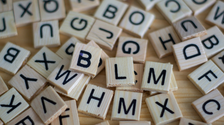Dear students, welcome to my first article about Italian patterns. When I say patterns, I mean those grammatcial rules, idioms, or specific words that are repeated over and over in the Italian language in the same way. Learning a language by learning these patterns is extremely effective because it will help you to remember things much more easily than learning each grammar rule or idiom by itself. So my goal in these articles is to group these patterns in categories so that you can remember them easily and, most of all, use them effectively.
1. Bello
Today’s topic is grammar! I want to go over something my students struggle a lot with: an adjective with an article ending. It might not be the way your grammar book explains it, but it’s my own way to teach it and I think that it really helped my students to remember this rule. It’s very common in Italian to have an “article” attached to an adjective root. Let’s take as an example the adjective bello. This extremely common article behaves in different ways according to its position: if positioned after the noun it refers to, it behaves as a normal four ending adjective (bello/bella/belli/belle). If put before the noun it refers to, it behaves a bit differently. Remember that bello, together with buono, is one of those Italian adjectives that are usually put before the name they refer to. Though remember that you can put bello and buono either way. Look at the chart below:
Be + il = bel
Be + lo = bello
Be + la = bella
Be + i = bei
Be + gli = begli
Be + le = belle
Be + l’ = bell’
As you can see, what’s going on here is pretty obvious. You attach the article to the root of the adjective according to the chart above (this doesn’t mean you don’t put the article before the adjective. That’s not a real article you are attaching. It’s just a particular ending so similar to definite articles that I call it “article ending” ). Let’s look at a few examples:
Il ragazzo —> il ragazzo bello —> il bel ragazzo
Gli alberi —> gli alberi belli —> i begli alberi
La bambina —> la bambina bella —> la bella bambina
This is what you do:
⁃ Choose the right article for the word
⁃ Position bello after the noun treating it as normal adjective
⁃ Or position bello before the noun and change the ending according to the article you would’ve used.
This makes sense, doesn’t it? A lot of my students ask me if there is a different between the position of the adjective. There’s practically none. Though I do understand the struggle of saying “begli” instead of “belli”, that’s why I often suggest my students to put the adjective after. It’s way easier, and correct anyway.
2. Quello
Let’s go back to our original topic: patterns. Is bello the only adjective that behaves this way. Unfortunately not! Let’s talk about a pretty common demonstrative adjective: quello. Well, quello behaves in the same exact way. Let’s take a look at some examples:
⁃ il telefono —> quel telefono
⁃ lo zaino —> quello zaino
⁃ la ragazza —> quella ragazza
⁃ gli occhi —> quegli occhi
⁃ i capelli —> quei capelli
⁃ le strade —> quelle strade
⁃ l’ape —> quell’ape
As you can see it does exactly the same thing “bello” does. Of course you don’t have to worry about the position of the adjective quello in this case since the only acceptable and possible position is strictly before the name it refers to.
3. Buono
Finally we’ve got the adjective buono. Basically, it works like the previous adjectives, but instead of using definite articles as endings, it uses indefinite articles (un, uno, una, un). Again the use of buono depends on the position of it. If positioned after the noun it refers to, it has four regular endings (buono/buona/buoni/buone), exactly like the adjective bello. Otherwise it follows the “usual” rules. Look at the examples below:
Un amico —> un buon amico
Un mattino —> un buon mattino
Uno2 zaino —> un buono zaino
Uno2 specchio —> un buono specchio
Un’amica —> una buon’amica
Una chiesa —> una buona chiesa
In the plural you have only buoni and buone:
Delle amiche —> le buone amiche
Degli amici —> i buoni amici
So, let’s wrap it up:
- Bello is a normal four-ending adjective when it’s put after the noun it refers to (bello/bella/belli/belle and quello/quella/quelli/quelle)
- Bello becomes bel/bello/bella/bei/begli/belle/bell’ if put before the noun it refers to
- Quello has always “articles endings”: quel/quello/quella/quei/quegli/quelle/quell’
- Buono is a normal four-ending adjective when it’s put after the noun it refers to (buono/buona/buoni/buone).
- Buono becomes buon/buono/buona/buon’/buoni/buone if put before the noun it refers to
There are only three adjectives that behave this way in Italian but it’s crucial to know how to use them because of how common they are! I hope you enjoyed my article. If you have any question either leave a comment on this article or book a lesson with me! A presto!
Note:
1. Remember that when the adjective is preceded by an adverb (molto, davvero…) the only plausible position is after the name it refers to… so no worries about the rules above! Look at these examples:
Un bell’albero… but … Un albero molto bello
Un buon libro… but … un libro davvero buono
2. Phonetically speaking “un buono specchio” or “un buono zaino” sound funny. Even though they are grammatically correct I strongly recommend to put buono after the name when used as “buono”. If you don’t remember when to use uno here’s a quick reminder:
⁃ S + consonant (specchio, scontrino)
⁃ Ps (psicologo)
⁃ Pn (pneumatico)
⁃ Gn (gnomo)
⁃ X (xilofono)
⁃ Y (yogurt)
⁃ Z (zaino)
Note: When the adjectives bello, buono and bello are pronouns (pro - noun = in place of a noun), they have only four regular endings! Look at this example:
- Di chi è quel maglione? (Whose sweater is that?)
- Quale? Quello? (Which one? That one?)
- Sì, quello! (Yes, that one)
- Luca ha dei begli occhi! (Luca has two beautiful eyes!)
- Hai ragione, sono davvero belli! (You’re right, they’re really beautiful!)
Hero image by Tom Podmore on Unsplash







